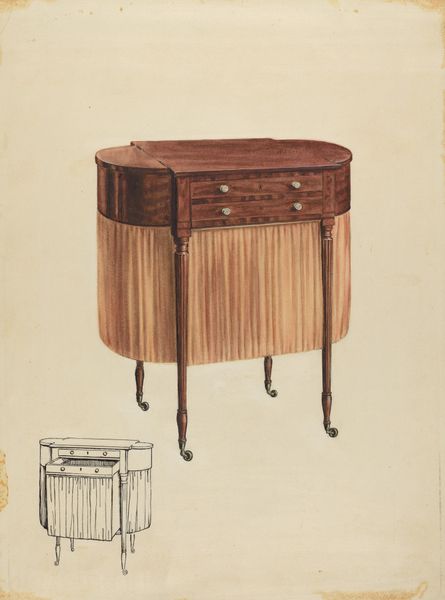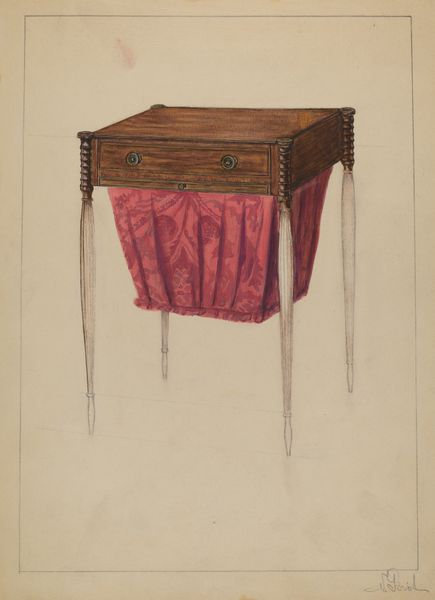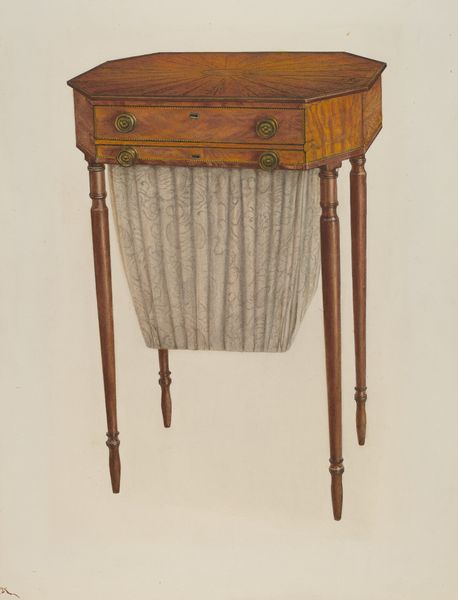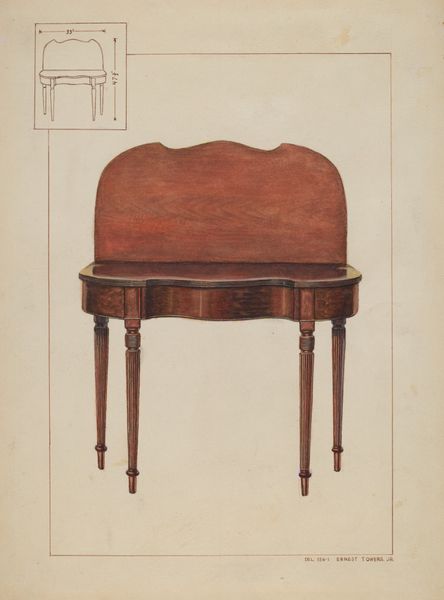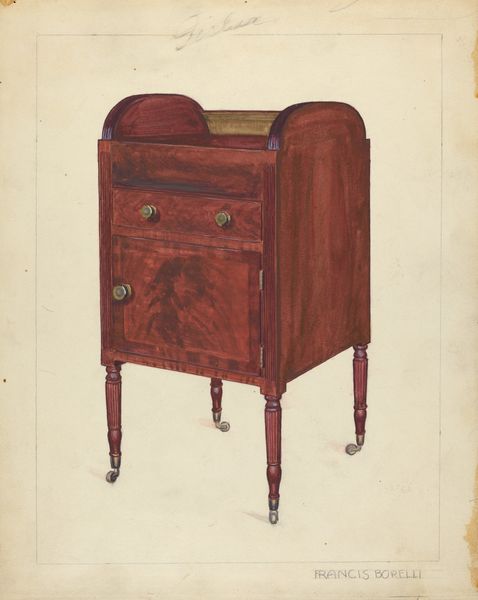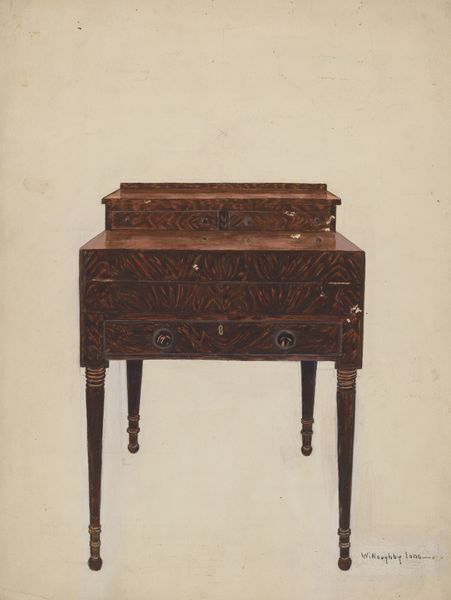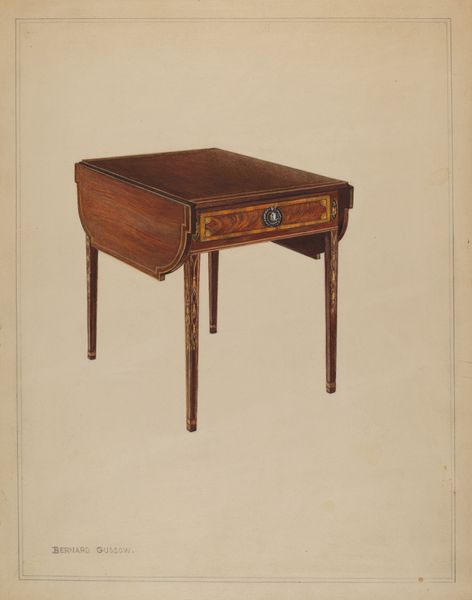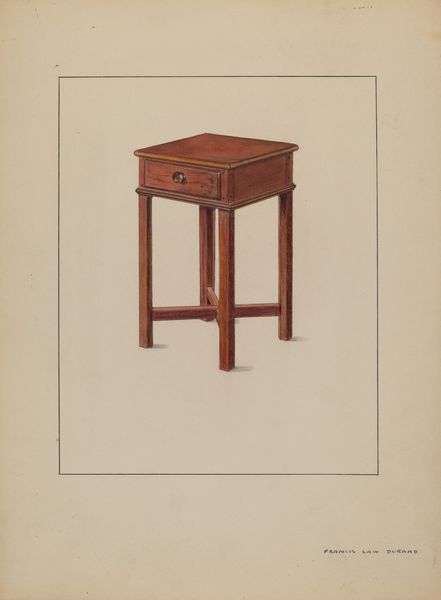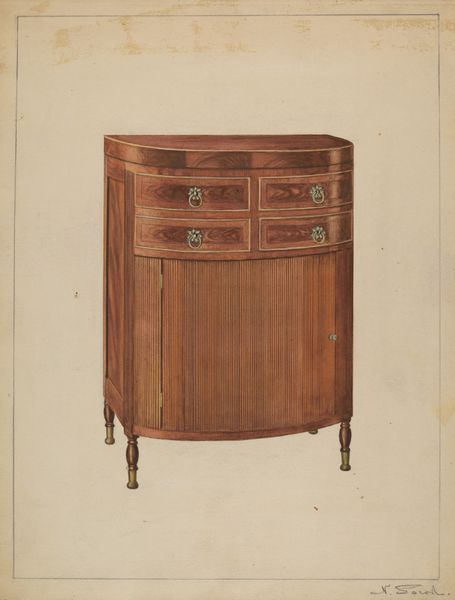
drawing, watercolor
#
drawing
#
water colours
#
watercolor
#
realism
Dimensions: overall: 30.7 x 22.9 cm (12 1/16 x 9 in.)
Copyright: National Gallery of Art: CC0 1.0
Curator: At first glance, I find myself drawn to the fragility communicated by those slender, almost tiptoeing legs. Editor: Yes, it is quite delicate. We’re looking at Bessie Forman’s "Sewing Table," created around 1939, rendered in watercolor and drawing. Curator: It projects a quaint image of domesticity. One can almost hear the soft rhythm of a sewing machine in a sunlit room. Did images like these project American cultural ideals during that era? Editor: Definitely. There was a romanticization of home life, especially in the face of economic hardships like the Great Depression. Visual representations like these became prevalent as advertisements, or interior design aspirations, that conveyed a sense of order and comfort. Curator: The geometric checkerboard design above the table introduces an interesting disruption; an abstract pattern alongside a purely utilitarian object. The design might be about control, perhaps about ordering the disorder of domestic activities, or maybe about aspiration. Editor: It does pull your eye upwards, doesn't it? Consider that art-deco sensibilities were still in the air in '39. That, combined with the rather genteel "feminine" sphere represented by needlework and sewing – there is definitely a commentary here about the space allowed for decoration, and also possibly, women's art. Curator: Also consider that these objects could be vessels filled with stories and histories - not just for what they represent culturally, but as containers of memory. A family memento from many years passed. Editor: I agree that its social purpose can have multiple readings - especially depending on its original location, such as its domestic use for women specifically in some context. Looking closer, I think the basket slung under the drawers is designed specifically to catch trimmings – so maybe function still wins over design. Curator: Ultimately, an intimate snapshot of functional art and domestic aspirations in a period defined by the intersection of hope and resilience. Editor: A picture into American social expectations—captured with such care by Forman through her attention to detail.
Comments
No comments
Be the first to comment and join the conversation on the ultimate creative platform.

